Family and cosmetic dentistry in Nashville. We specialize in computerized dental technology
to make your dental care visit convenient and stress-free.
Cone Beam scans are completely painless. There is no pre-scan consultation required or after care instructions.
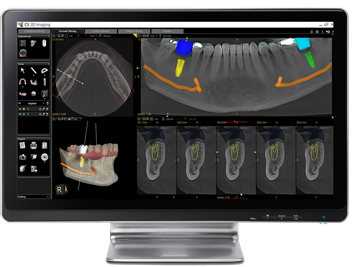


Digital X-Rays that emit less radiation. One of the most significant advances in the dental industry over the past few years has been the creation of Digital X-Rays. Digital X-Rays all your dentist to process and view your X-Rays much faster than traditional dental X-Rays. With digital X-Rays, the finished image is sent directly to your dentist’s computer system so they can quickly inspect them.
Digital X-Rays also help the patient by allowing the dentist to complete their dental work faster, without needing to wait for X-Rays to develop. Because the final X-Ray is a digital file, X-Rays can easily be transferred to a new dentist should you ever move.
Digital X-Rays are a great improvement over traditional dental X-Rays. If it has been a while since you had a dental exam, visit our office today to try digital X-rays for yourself.
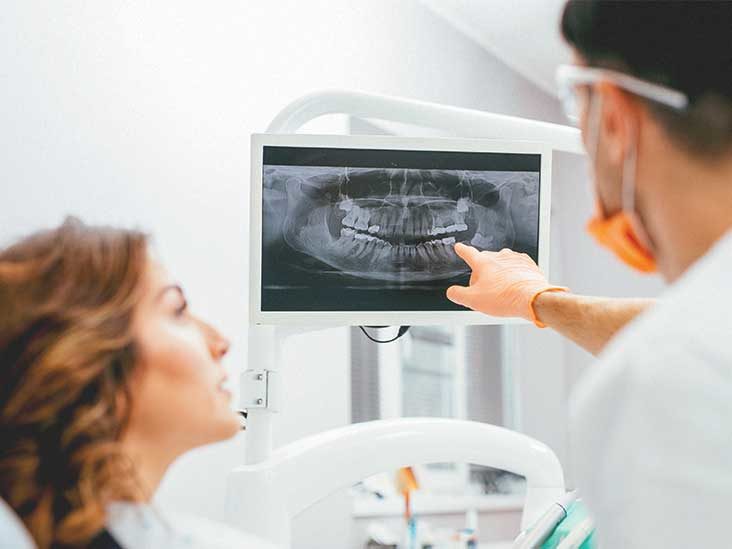
Intraoral Camera
An IntraOral dental camera is one way we can show you your teeth as we see them. It’s a tiny video camera about the size of a pen. It has a disposable cover to prevent contamination and, as it’s moved from tooth to tooth, you can see a video on the computer screen nearby.
If it seems to us that you need some dental work, you can see the reason. The images can be stored and kept in your record; they can also be enlarged to show greater detail.
What Procedures might be necessary and why?
It’s a good way to see how well you’ve been doing with your dental hygiene. By seeing exactly where plaque has built up on your teeth, you can adjust the way you brush and floss, to prevent it from building up again.
You have the option of watching these images or not. If you’re curious and want to better understand what plaque or other dental problems look like, you can get a close-up view, but if you’d rather just let us do our job, you don’t have to look at the images that helps spot problems early.
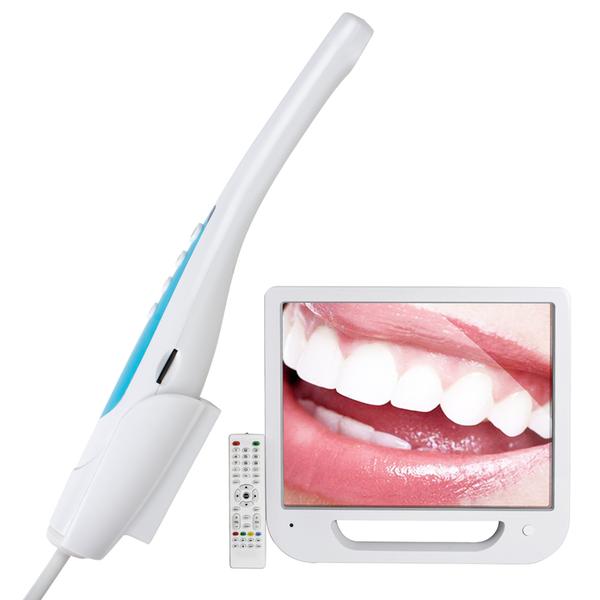
In order to offer the best health options to our patients, we have switched to using zirconia dental implants since 2014. Eat, laugh, and smile again with complete confidence.
Dental Implants
Regain Your Happy Smile. When facing the loss of one or more teeth it’s only natural to wonder, “Will I ever feel good about my smile again?” The exciting answer is a resounding, “Yes!” At Belcourt Family Dentistry, we provide beautiful dental implants to Nashville area patients representing a quantum leap forward in tooth loss – it’s almost like getting your own tooth back!
A dental implant is a highly sophisticated device that is surgically placed into your jaw bone to replace a single tooth or multiple missing teeth. Acting as the root of a tooth, implants provide an incredibly strong foundation for your tooth-like restoration to be placed, completing the implant process.
Other advantages of implants include:

Our comprehensive care sets us apart from other practices. Instead of splitting your treatment among several off-site practitioners, we handle both phases of the implant process under one roof! Dr. Masso is expertly qualified to place your implants.
In addition, Dr. Masso expertise in shaping the gum tissue enables him to achieve superior results when it comes to placing your restoration. A truly natural-looking restoration requires knowledge of the bone, gum, and tooth relationship. Dr. Masso will take his time with your smile to get everything just right. You’ll be amazed when you see the final result!
At Belcourt Family Dentistry, we pride ourselves on our honesty and integrity. When you visit us for a consultation, Dr. Masso will thoroughly explain all treatment options in detail, helping you arrive at the best, most conservative solution. Know that we will never suggest a treatment you truly don’t need.
For beautiful dental implants in Nashville that will leave you smiling, request your appointment today!
Request an Appointment.
You deserve a fully functioning smile. Schedule your implants consultation today!
Losing a tooth can make you feel uncertain about the future of your oral health and your smile. At Belcourt Family Dentistry, we make restoring your smile and protecting your oral health easy.
Dr. Masso, is experienced with dental implants, one of the most popular choices when it comes to long-term solutions for tooth loss.
PORCELAIN AND ZIRCONIA IMPLANTS
Modern dental technology can help you create a perfect smile and restore missing teeth with porcelain or zirconia implants. The tooth structure can be crafted from porcelain or zirconia for a tooth structure that functions and appears to be a completely natural tooth. The porcelain tooth is added to the replacement “root” once it is fully integrated into the bone structure in the jaw.
The implant itself (the replacement root structure of the tooth) may be either titanium or zirconium. Each material has benefits, and an individual evaluation will help us to determine which type of implant is appropriate in your case.
ZIRCONIA IMPLANTS IN NASHVILLE HOLISTIC DENTIST
Zirconia tooth restorations can produce a superior aesthetic result for some patients as the entire structure, including beneath the gum tissue, is a pure white, rather than the metal grey of titanium. Both zirconia and titanium are considered to be “bioinert,” or able to fuse to the jaw structure without problems. One issue that can arise with titanium implants is that patients with thinner gum tissue or gums that recede may eventually have a visible grey line begin to appear at the gum line. The white of zirconia matches natural tooth color and can be the more aesthetic solution.
WHAT ARE PORCELAIN IMPLANTS?
At Belcourt Family Dentistry, we are committed to providing our patients with the latest options in dental materials and technology. The tooth itself can be crafted from various types of materials, including zirconia, feldspar, or a range of other materials. Each porcelain material used in a tooth restoration offers specific benefits in appearance and strength. We ensure our patients understand why one type of porcelain will be more appropriate for a tooth restoration.
METAL ALLERGIES AND ZIRCONIA IMPLANTS
Some patients react to metals and should avoid titanium implants. While titanium is safe, and these implants have been part of dental technology since the 80s, zirconium is a superior option for many patients. Titanium implants contain a small quantity of other metals, including nickel, and are not appropriate for those who have an allergic reaction to metals or patients who have concerns about the use of any metal in dental restorations. Zirconia implants are durable and beautiful, crafted from this white translucent material that has a very natural appearance.
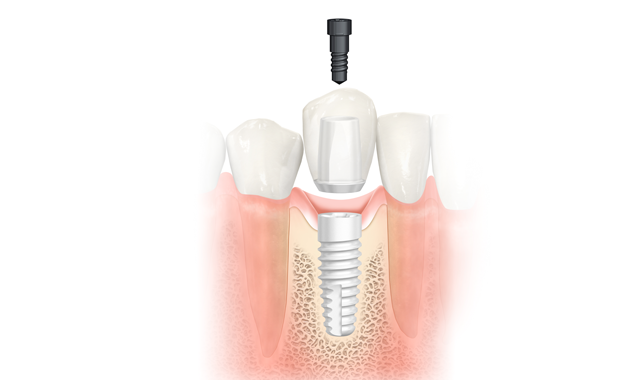
HOW DO ZIRCONIA IMPLANTS WORK?
Zirconia implants are one piece (the body of the implant and the post), as opposed to the standard titanium two-piece system. A tooth replacement supported by a zirconium implant can produce a beautiful, aesthetic, metal-free restoration. The components in a one-piece structure do not shift as is possible with two-piece titanium structures, which could result in tiny pockets in which bacteria could potentially flourish.
Contact us today for one of the best zirconia and porcelain implants Nashville has to offer.
Health Benefits of Dental Implants
Many people know the great cosmetic benefits of dental implants, but did you know that they can also protect your health?
Bone retention – Tooth loss often leads to bone loss, threatening the foundation of your remaining teeth. A dental implant integrates with your bone and protects your adjacent teeth.
Preserving your bite – A gap in your smile allows space for your other teeth to shift. Both adjacent and opposing teeth may move after tooth loss occurs. Since dental implants fill in the gap in your smile, they also provide stability for your surrounding teeth.
Unrestricted dietary choices – With dental implants, you can eat all the foods you love, without restriction. Bring on the crunchy carrots and apples!
Long-term solution – Because dental implants integrate with your bone, they offer stability and a long-term solution to tooth loss. It’s a good idea to avoid chewing ice and biting into anything that would damage a natural tooth because this could also damage your implant crown.
What are Dental Implants?
Dental implants are prosthetic teeth installed directly into a patient’s jaw. Implants can be used to secure bridges, replace a missing tooth or anchor dentures and overdentures. This advanced treatment is the only option available which works with the jawbone to stimulate bone growth and regeneration to provide better support to the soft tissues. Dr. Masso will install a Ceramic Implant into the jaw, which acts as a root for the prosthetic. The visible tooth is made from a crown, usually crafted from porcelain. These crowns look almost exactly like a natural tooth.
How Dental Implant Treatment Works
Your comfort is important to us! Dr. Masso is gentle and will always make sure you have a comfortable treatment.
Dr. Masso is highly skilled in the art and science of dental implant placement. He will choose the ideal location for your dental implant, selecting a location with good bone density to support your implant.
Once he places the dental implant, he will give you time to heal. This process can take up to a few months, but will be worth the wait! During this time, your dental implant will integrate with your bone, becoming secure and stable.
After your dental implant heals, he will create your custom dental implant crown. We design each dental implant crown specifically for you. The crown is made in house. It will match the color and shading of your natural teeth so that when you smile, no one will notice you have a dental implant.
Should I consider dental implants?
There are plenty of cosmetic procedures that will give you the teeth you want, but few options are quite as permanent as dental implants.
Used to fully replace teeth after tooth loss, dental implants can help you achieve a perfect smile that lasts.
These permanent implants are perfect if you have decayed or missing teeth, but diligent oral hygiene when it comes to brushing, flossing, and keeping up to date with your routine dental visits.
How Are Dental Implants Installed?
Most of the time, the placement of a dental implant is a three visit procedure. During the initial appointment, the post is implanted into the jawbone. The next appointment will be scheduled a few weeks later to allow the titanium to fuse with the jawbone before the next portion is installed. This fusing process provides a very stable foundation because it stimulates natural bone development to support better the soft tissues of the face and mouth. Bone loss accompanied by the loss of a tooth is also reduced significantly. During the second appointment, an abutment is installed. The crown, denture or bridge designed to act as the tooth prosthetic is attached to the implant post using the abutment. An impression of the gap and the surrounding teeth will be used to craft the prosthetic tooth. At the last appointment, the prosthetic is connected to the implant via the abutment and buffed until smooth.How Long Will a Dental Implant Last?
Dental implants should last a lifetime, with proper care. While the implant itself will not decay, the surrounding gum and soft tissue can still atrophy. The patient will need to brush, floss and attend routine visits with the dentist to ensure long-lasting dental health. These devices are truly designed to replace a tooth permanently.
How Long Will a Dental Implant Last?
Dental implants should last a lifetime, with proper care. While the implant itself will not decay, the surrounding gum and soft tissue can still atrophy. The patient will need to brush, floss and attend routine visits with the dentist to ensure long-lasting dental health. These devices are truly designed to replace a tooth permanently.
As we only use innovative procedures in our offices and procedures, we routinely use platelet rich fibrin (PRF) in oral surgeries that involve hard and soft tissues, derived from the patient. The fibrin proteins are collected in the office in a short procedure which only takes a few minutes. The use of PRFs in surgery ensures that the patient has the best opportunity to successfully heal from their surgery.
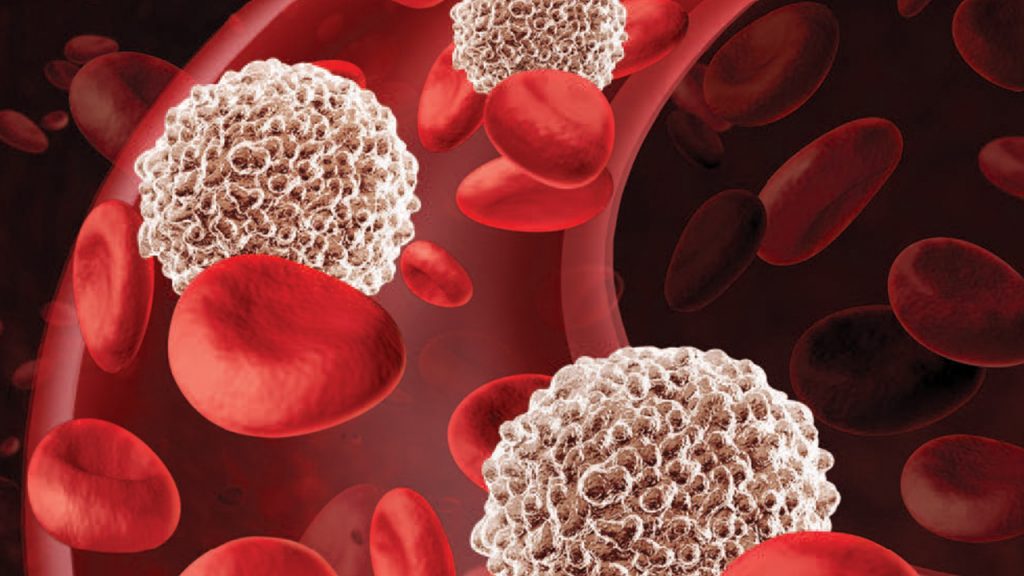
The solution to these and other difficult situations is a new Platelet Therapy created from your own blood. Leukocyte-Platelet Rich Fibrin (L-PRF) changes all the rules as it promotes healing and bone growth from within your own body. Unlike other treatments that use artificial components, Platelet Therapy with L-PRF uses only your own blood. With a simple blood draw and an advanced technology protocol, L-PRF is individually made for you, from you. The end results are improved healing response and significantly less recovery time.
Medical research has demonstrated that using our own blood cells, accelerates healing and tissue regeneration in all forms of surgery. Specifically, platelets, fibrins, and white blood cells are used for this procedure. The protein that is carried by the platelets is the magic ingredient that is being used in numerous private office settings for wound healing and various surgical procedures, including oral surgery.
Using Your Own Power to Heal
A small amount of blood is collected to create an advanced bioactive compound that will boost the healing forces found within your own blood to improve your healing. The procedure to obtain L-PRF is virtually painless – no more so than a routine blood test. After a small blood sample is taken from either your inner arm vein or your top hand vein, the dental clinician will then use the IntraSpin System to create as many L-PRF clots as deemed necessary for your procedure. After the blood sample is taken, the tubes are spun using a very specific centrifuge and protocol. The L-PRF clots are then removed and pressed to the ideal thickness. After your L-PRF is created, it can be placed directly in or on surgical sites to immediately promote healing. L-PRF is also an excellent way for your doctor to apply other regenerative materials to a specific surgical site as needed. The L-PRF fibrin clot can be divided, combined with bone graft material, and made ready for any indication.
Healing from Within
L-PRF is basically a bioactive “band-aid” that is created from your own blood and then placed in your surgery sites to promote healing. When placed in surgery sites, L-PRF releases your body’s own natural healing proteins, creating a more efficient network for cells to enhance the healing process for better and faster bone regeneration.
Do you suffer from headaches? Do you hear popping or clicking sounds when you move your jaw?
Temporomandibular disorder (TMJ/TMD) is a general name for a variety of symptoms which can have a variety of causes. It’s often known as TMJ/TMD, for Temporomandibular Joint (Syndrome) and is a very common problem in the field of Neuromuscular Dentistry.
Understanding TMJ/TMD
Many factors can cause TMJ/TMD but a malocclusion (a bad bite) is the most common cause. TMJ/TMD is usually treated with anti-inflammatory drugs and pain medication. We will investigate your neuromuscular occlusion – the relationship between your teeth, muscles and jaw joints – to determine if a malocclusion could be causing your TMJ/TMD and take necessary steps to alleviate your TMJ/TMD.
The Jaw Joint
The lower jaw is attached to the skull near the temples, and when it closes, the teeth should meet smoothly, with an even pressure and no discomfort. If teeth are misaligned and the jaw closes in an unstable or uncomfortable way (known as malocclusion), the muscles, tendons and ligaments related to the jaw joint become strained.
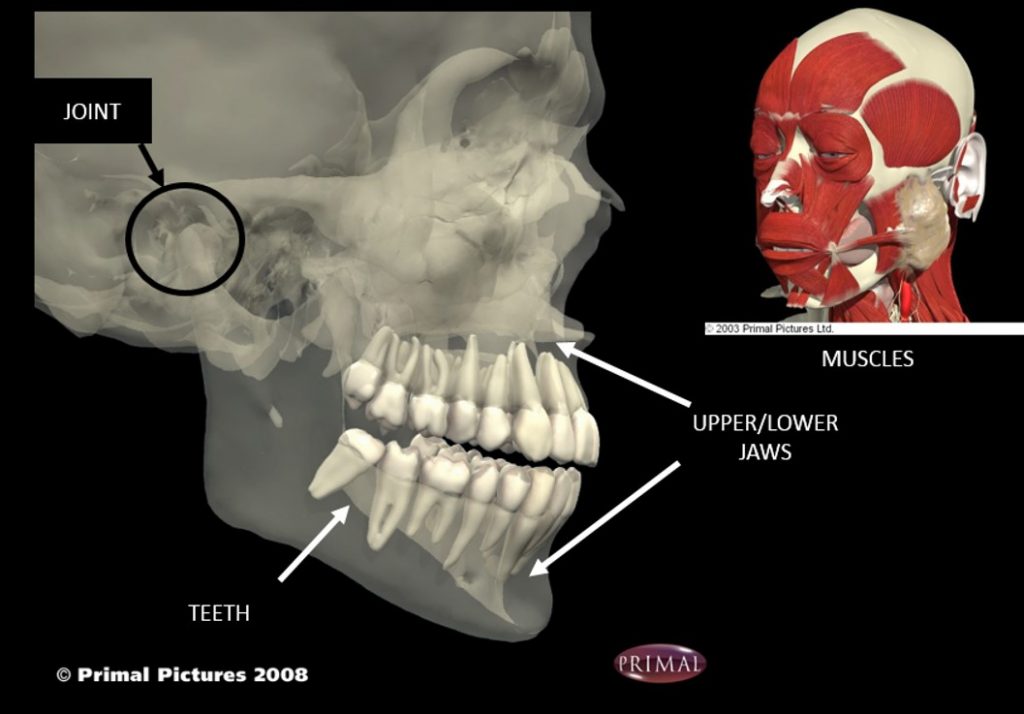
We will make sure you get the smile you LOVE!
Imagine you could flip through a picture book and choose a new look for your smile.
Your Dream Smile – No Longer a Dream
What would your new smile include? What you imagine can become a reality through cosmetic dentistry at Belcourt Family Dentistry! Whether your smile has only a minor blemish or two, or needs more extensive corrections – you’ll find your new smile with Dr. Masso!
Using the latest and best aesthetic treatments and innovations, Dr. Masso consistently achieve incredible results. By putting his experience in cosmetic dentistry to work for you, you’ll open yourself up to a world of possibilities: an enhanced appearance, improved self-confidence, and greater joy of life!
Our most popular cosmetic services include:
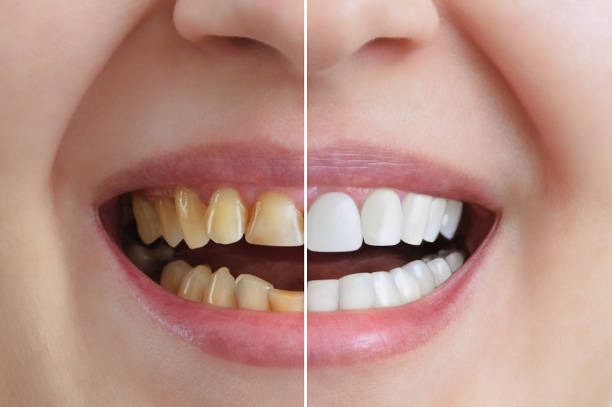
Why should I come to Belcourt Family Dentistry for my smile design?
At Belcourt Family Dentistry, our smile design process is directed by what you want – it really is all about you! That’s why a consultation with Dr. Masso in Nashville starts with an open discussion of your desires and expectations. Armed with a clear understanding of your smile goals, will create an effective and conservative treatment plan for you. We will perform your entire smile design under one roof. Above all, we’ll never forget who the most important member of our team is – You! Your comfort, your satisfaction, and your happiness will always be our first priority. You’ll notice the difference here right away.
We can make your smile dreams come true.
Do you gaze into the mirror and wish your smile could be improved? Is there a trouble spot in your otherwise attractive smile? Have years of faithful service left their mark on your smile? Let us help! Your smile design consultation is the simple first step towards a more confident you! Contact us Today!
If you have a busy career or active social life, you know how important it can be to have a beautiful smile that makes a great first impression!
Some of us are not lucky enough to be born with the perfect smile. Fortunately, at Belcourt Family Dentistry, our artistic and skilled dentists, Dr. Masso, can create a gorgeous smile that looks like you were born with it!
Cosmetic Dentistry
Cosmetic dentistry encompasses all the dental treatments and procedures used to improve the appearance of your teeth or gums. Whether you want a subtle correction or you’re in need of a significant repair, cosmetic dentistry can do more than just enhance your smile; it can improve your oral health and boost your confidence. Dr. Masso is a highly rated cosmetic dentist in Nashville, Tennessee, where he offers a complete menu of cosmetic dental services. Learn more about what cosmetic dentistry can do for you by calling or booking your appointment online today.
Cosmetic Restorative Dentistry
Teeth can take a real beating, especially if you play sports, have suffered from an accident, or you have a teeth grinding habit. Highly esthetic dental restorations such as tooth-colored fillings, crowns, and porcelain veneers can restore the health and appearance of your teeth.
All our restorations are cosmetic because we create them to complement or improve your appearance. We use composite fillings that are the same color as your natural teeth to fill any cavities you may experience. We can also use the same composite material to repair small chips and gaps.
If your smile is worn down, chipped, or damaged in some way, restorative treatments such as dental crowns and veneers can help us rebuild your smile and reduce common problems such as teeth sensitivity and a misaligned bite.
Cosmetic Dentistry Q & A
What is cosmetic dentistry?
Dental procedures that improve the appearance of your teeth and gums fall within the scope of cosmetic dentistry. Continuing advancements in dentistry have given cosmetic dentists the skills, techniques, and high-tech materials they need to correct practically any noticeable aesthetic issue or flaw safely and efficiently.Cosmetic dentistry is routinely used to change discolored, chipped, misshapen, or missing teeth. Dr. Masso can:
CROWNS
Strong, beautiful, conservative.
A crown (also known as a cap) is a dental restoration designed to completely cover a damaged tooth. Strong and beautiful, a crown is an excellent way to restore function to a compromised tooth. With years of experience Dr. Masso is able to replicate your natural tooth structure both aesthetically and functionally.
Porcelain crowns, or caps, are often used to restore appearance to a tooth that’s severely worn, cracked, chipped, or discolored.
Dental crown is essentially a tooth-shaped cap, made of porcelain, ceramic, or other materials, placed over a tooth by a dentist to restore strength, shape, size, and appearance. When cemented into place, the crown fully encases the entire visible portion of the tooth, at and above the gumline, to protect and strengthen the structure of a tooth that cannot be restored with a filling or other restoration method.
Serving Nashville and the surrounding area, John G. Masso, D.D.S. practices general and cosmetic dentistry in Nashville, with dental services geared toward conservative, holistic treatment. Using biocompatible materials that will not cause a reaction in the patient, he employs a natural, “mimicking” technique designed to emulate the patient’s natural anatomy, employing the least aggressive methods possible while ensuring the well-being of the whole patient.
HOW DOES A CROWN WORK?
A crown is a dental restoration method used to completely cap a damaged tooth that does not have enough remaining structure to hold a filling. In addition to strengthening the tooth, capping it with a crown can improve its shape, alignment, and appearance. A dental crown can also be placed on top of an implant to form a tooth-like shape and structure that functions exactly like a natural tooth.
Chewing can be improved when a tooth is reshaped with a crown to more efficiently match opposing teeth. Porcelain crowns or ceramic crowns can be matched to the color of the teeth for a natural, aesthetically pleasing appearance. Modern ceramic processes produce color and translucency more natural looking now than ever before.
WHY YOUR DENTIST MAY
RECOMMEND A CROWN
Dr. Masso may recommend tooth restoration with a crown for of a number of reasons, both structural and cosmetic. He may place a crown to:
Am I a good candidate for a crown?
Crowns are extremely versatile and are used in many situations, including:

Why should I get my crown from Belcourt Family Dentistry?
At Belcourt Family Dentistry we believe in integrity. You can count on us to achieve impressive results, and stand behind our work! In Dr. Masso’s own words: “I’m going to stand behind what I do… I wouldn’t put anything in your mouth that I wouldn’t be happy with in mine. I’m serious about my dentistry.”
Doesn’t it make sense to place your smile in the hands of a team you can trust? If you are in need of one or more dental crowns in Nashville, contact our practice today to request your appointment!
The CEREC Process
During your appointment, you and your doctor will discuss the details of the procedure and your doctor will answer any questions you may have. Your doctor will then use a special 3D imaging camera to take a photo of your tooth. Using CEREC’s proprietary software, your restoration will be designed according to your tooth’s appropriate form and function. Then, CEREC will use diamond burs to create your restoration out of a piece of ceramic. Finally, the ceramic restoration is bonded to your tooth using state-of-the-art adhesive dentistry.
Why Choose CEREC?
There are many advantages of using CEREC over traditional crown technology.
Time: CEREC crowns are made in one visit, saving you considerable time away from your job and family.
Comfort: With CEREC, there is no need for a temporary crown, eliminating significant potential discomfort.
Aesthetics: The strong, tooth-colored ceramic materials of CEREC restore your teeth to their natural strength, beauty, and function, and closely match the composition of your natural tooth structure.
Strength: Milled ceramic is stronger than the traditional method of layering and pressing, so your smile will stay beautiful for years!
Fillings: CEREC material and technology can also be used for fillings. Since these fillings are made out of porcelain, they are more durable than white composite fillings.
DENTISTRY SHOULD BE CONVENIENT
Same Day Crowns
If you have a large cavity, infected, chipped, or cracked tooth, a dental crown can cover the entire surface and protect your tooth’s structure and enamel from further damage. Our in-office CEREC technology allows us to build and place your crown in just a single appointment and restore your smile quickly to give you convenience and ease along with quality dental care. With traditional lab-made crowns, this process would take 2 appointments over 2-3 weeks.
HOW IT WORKS
CEREC & CAD/CAM Technology
CEREC is a type of CAD/CAM (Computer-Assisted Design/Manufacturing) technology. Rather than taking dental impressions and sending them to an outside dental lab, CEREC technology involves special digital scanning tools and computers to create the design for your dental crown. Once we take these digital images of your teeth, the doctors custom design a precision-fit crown. The information is then sent to our in-office milling machine which shapes a solid block of porcelain into a custom, natural-looking crown.
WHAT TO EXPECT
The CEREC Placement Process
The CEREC crown placement process is quite similar to having a traditional crown placed, but it only takes one appointment. Your damaged tooth will be shaped into a stable, strong platform onto which your crown can be attached.
Then, we’ll use a digital imaging camera to take a 3D scan of your mouth, and upload this information into our CEREC computer. With this technology, we will design your custom crown to ensure perfect fit and function. A block of porcelain will be loaded into the CEREC CAD/CAM milling machine, and it will automatically sculpt the material into the proper shape. Once your crown has been made, it will be checked for proper fit, then bonded permanently onto your tooth using dental cement.
CONVENIENCE & EASE
Benefits of Same-Day Crowns
WHAT ARE CEREC CROWNS MADE OUT OF?
Durable Porcelain Material
CEREC crowns are made of durable, nonporous porcelain material. When compared to natural tooth enamel, this ceramic material is similar in strength, durability, and translucency. This means that your CEREC crown will look and feel just like a natural tooth. Each CEREC crown is made out of a pre-manufactured block of this material. To begin, the block of porcelain is simply loaded into the CEREC milling machine. Then, the machine cuts out the shape of the crown based on the 3D instructions uploaded by Dr. Masso. One of the benefits of CEREC is that the color of your existing teeth can be matched perfectly. CEREC porcelain blocks come in a wide variety of shades and colors, so Dr. Masso can ensure that your new crown looks just like the rest of your teeth.
HOW MUCH DO CEREC CROWNS COST?
Affordable Restoration Options
You can expect to pay about the same amount for a CEREC crown as you would for a traditional, lab-made crown. The price of one type of crown or the other may differ slightly, but the cost is usually very similar.
However, it’s not possible to provide you with an estimate for your treatment without an in-person consultation. To learn more and get an accurate cost estimate for your treatment, schedule a consultation at Belcourt Family Dentistry.
During your appointment, Dr. Masso will examine your mouth and help you decide which option may be right for you, and give you a quote for both CEREC and traditional lab-made crowns. Contact us now to get started.
CEREC VS. TRADITIONAL CROWNS
What’s the Difference?
First, CEREC crowns and traditional crowns are made out of slightly different materials. While CEREC crowns are milled from a block of pure porcelain, traditional crowns usually use a “porcelain-fused-to-metal” design. This consists of a metal base to which a porcelain crown is bonded. This design is slightly more durable than a CEREC crown.
In addition, CEREC crowns cannot always be used for the same issues as traditional crowns. For example, if your tooth is broken below the gumline, a CEREC crown cannot be used. This is because the 3D scanner used to capture an image of your mouth and tooth cannot reach below the gums. Instead, a traditional, lab-made crown may be required to restore your tooth.
This can differ between dentists, too. Experienced CEREC dentists like Dr. Masso can make very natural-looking, realistic CEREC crowns, while those with less experience may not be able to provide the same results.
VENEERS
What are Veneers?
Veneers are one of the easiest and most effective ways to get the flawless smile you’ve always wanted. These ultra-thin, custom-made porcelain shells can completely reshape your teeth, making them an ideal solution for a range of cosmetic dental problems. Veneers can also be used to lengthen worn or short teeth. The overall purpose for veneers is to improve the appearance of a person’s smile to make them appear younger, healthier and more attractive. From his state-of-the-art office in Nashville, Tennessee, Dr. Masso specializes in natural-looking veneers that are virtually imperceptible, so your beautiful smile is the only thing others will notice. If you’re interested in learning more about what veneers can do for you, call the office or book your appointment online today.
Veneers Q & A
What are dental veneers?
Dental veneers, or laminates, are exceptionally thin shells designed to hide cosmetic flaws or restore lost tooth structure. Veneers, which are typically made from porcelain, are permanently bonded to the front side of your teeth to change their color or their shape. They can be used to correct a wide range of cosmetic flaws, including:
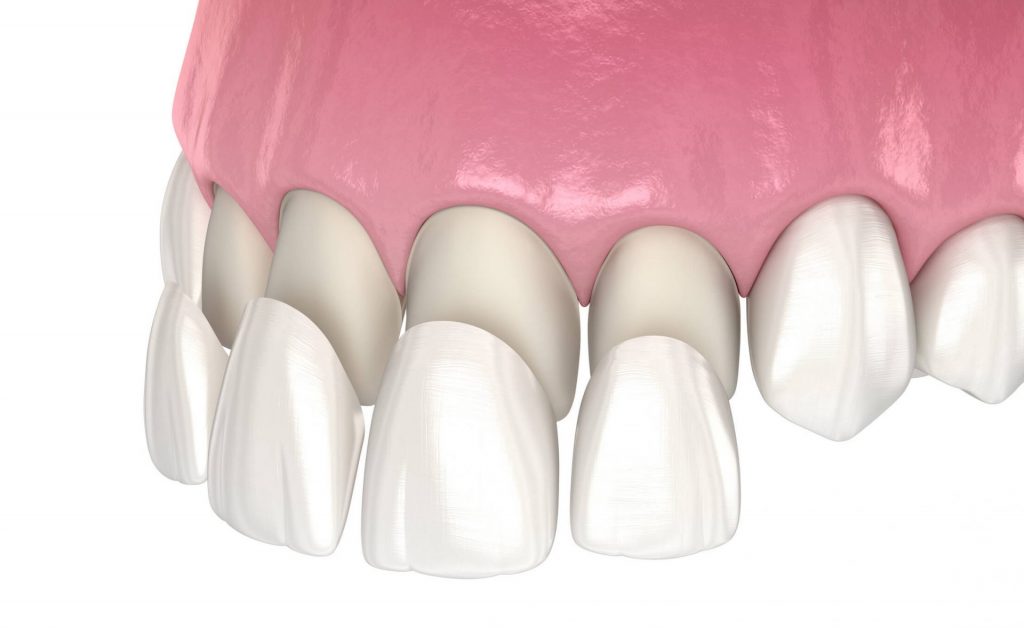
What does a veneer procedure entail?
After you have an initial consultation with Dr. Masso, which includes a comprehensive dental exam and detailed treatment plan, getting veneers can be done in one visit.
During your first visit, Dr. Masso buffs and lightly reshapes the surface of your tooth’s enamel to accommodate the veneer. Doing so only removes about half a millimeter of the tooth’s surface, or just enough so that your veneers won’t feel out of place in your mouth.
Although this process doesn’t bother most patients, you may request a local anesthetic if you’re particularly sensitive to dental work.
Next, Dr. Masso takes a 3D Scan impression, and helps you choose the right shade of white for your veneers. Dr. Masso cleanses your teeth with special bond-promoting chemicals. Then, he adheres the veneers to your teeth with dental cement and cures (hardens) the cement with a special light.
What Happens During the Veneer Process?
Dr. Masso will have an initial consultation appointment to discuss the patient’s smile objectives. Installation usually requires one visit. Dr. Masso will thoroughly clean and prepare the teeth. He will remove a thin layer of the tooth enamel to make room for the veneer. He will take a 3D scan of the tooth and the veneer will be made in house with our Cerec technology machine. He will bond the veneer to the previously prepared tooth with a composite resin cement. He will make sure the veneer fits properly and will buff and polish until it shines like a natural tooth.
What are the Pros and Cons of Porcelain Veneers?
Veneers are a popular dental treatment. They are strong, look natural and can last for a long time with correct care. They dramatically improve a person’s smile by correcting the appearance of the teeth. While being made, the veneers will be tinted to match the patient’s natural teeth. Porcelain veneers are durable and stain resistant. However, this treatment can be costly and may cause increased sensitivity. Dr. Masso has a variety of financing options available to suit every patient’s needs, so money should not be a barrier to improved dental health and appearance. Veneers are a permanent treatment as the patient’s tooth enamel is removed to make room for the veneers to be installed. Dr. Masso will discuss all of the options available as well as the pros and cons to ensure the best treatment is selected.
How do I take care of my veneers?
Because veneers are permanently bonded to your teeth, they’re incredibly strong and durable. To make sure they last as long as possible, however, it’s important to maintain healthy dental habits, brushing and flossing at least twice daily.
Even though porcelain veneers are more resistant to staining than natural tooth enamel, you may want to cut back on beverages and foods known to stain teeth, such as coffee, tea, red wine, and berries, to help them stay bright.
Certain habits, such as chewing on ice or grinding your teeth, can significantly reduce the life of your veneers or even your natural teeth. To prevent your veneers from cracking, avoid biting down on ice or hard foods, and wear a mouthguard if you grind your teeth at night.
INLAYS & ONLAYS
Our conservative inlays and onlays are long-lasting and beautiful. Schedule your consultation today.
At Belcourt Family Dentistry, superior restorative dentistry means revitalizing a tooth effectively yet conservatively. When a tooth can no longer be preserved utilizing a filling, but has not deteriorated to the point of requiring a crown, inlays and onlays are often the most conservative restorative option available.
What are inlays and onlays?
Sometimes referred to as a partial crown, an onlay is a precisely-shaped piece of porcelain which is bonded to a tooth. An onlay replaces one or more cusps (the peaks of the tooth). When porcelain pieces are bonded to the grooves (the valleys) of teeth only (and not the peaks) they are called inlays. For Dr. Masso, inlays and onlays are a viable option in conservative dentistry.
Will my inlay or onlay look natural?
In a word – yes! Our inlays and onlays are composed of precisely color-matched ceramic materials. Once Dr. Masso prepares and bonds your inlay or onlay in place, it will blend seamlessly into your smile like any other natural tooth. Additionally, our inlays and onlays will ensure your teeth close together properly and comfortably, providing a long-lasting restoration.
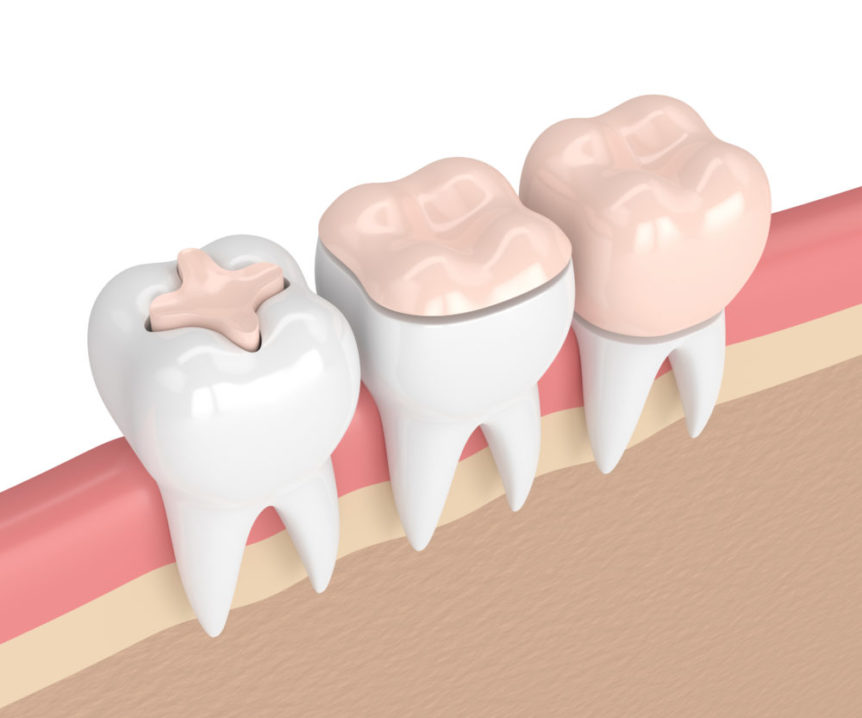
For the best in restorative dentistry, including onlays and inlays in Nashville, request your appointment at Belcourt Family Dentistry. Trust us to help you make the most of your smile! Schedule your consultation today!
Request an Appointment
Our conservative inlays and onlays are long-lasting and beautiful. Schedule your consultation today.
BONDING
Bonding is the go-to treatment for repairing chipped teeth, closing gaps, filling cavities, or changing tooth color. In dental bonding, a tooth-colored composite resin is applied to repair a chipped, decayed, fractured, or discolored tooth. The material bonds to the tooth, which is why the procedure is called bonding. Unlike veneers, which are fabricated in a dental laboratory, bonding can be performed in a single visit. Bonding is among the easiest, least expensive, and quickest cosmetic dental procedures. Composite resin can be shaped and polished to match the surrounding teeth for beautiful, natural-looking results.
DENTAL BONDING USES
Bonding can be used to correct a range of cosmetic and oral health issues. Its uses include:
BRIDGES
Everything You Need To Know About Dental Bridges
Are you suffering the loss of one or more teeth? If the gaps they’ve left behind make you feel self-conscious and reluctant to smile, dental bridges by Dr. John Masso may be the restorative option you’ve been searching for!
What is a dental bridge?
Just like a literal bridge spans the distance between two unconnected areas, a dental bridge spans the gap left behind by a lost tooth. A replacement tooth (a custom-made porcelain crown), is suspended across the space and fused to crowns placed on either side of the gap. The result is a strong, attractive, durable restoration.
How will a dental bridge benefit me?
In situations where a dental implant is not an option, a bridge is an excellent alternative. The benefits include:
Will my dental bridge look natural?
You may have heard the expression, “It’s all in the details.” This is especially true when it comes to dental bridges. Dr. Masso, have an incredibly detail-oriented approach to bridgework. Carefully examining the anatomy of your teeth and the tissue surrounding the missing tooth, their goal is to create a bridge which looks like a natural tooth emerging from your gums. We will obtain the best color match possible. Once your beautiful crowns are prepared and expertly placed, your smile will look and be complete!
Regain your confidence – contact us!
Just imagine how great it will feel to smile with confidence. It’s a difference people will notice. While they may wonder what about you has changed, the only thing they’ll be certain of is how fantastic you look! Request your appointment with Dr. Masso today!
Do you look in the mirror and wish you could have a straight, beautiful smile?
Maybe you’ve considered braces and decided that they just don’t fit into your lifestyle.A beautiful smile can be a real asset in many areas of life – social, personal, and professional. Having a smile you love can give you added confidence in all you do.
At Belcourt Family Dentistry, Dr. Masso offers
Clear Correct, an innovative approach to achieving improved teeth alignment, uses clear aligners to achieve the same great results as traditional orthodontic
What is Clear Correct?
Clear Correct is a system of clear plastic trays used as orthodontic devices; essentially Clear Correct acts as clear braces. Clear Correct trays fit precisely over your teeth and move your teeth gradually to an ideal arch-form, bite alignment, and beautiful smile. Clear Correct typically moves your teeth more quickly than traditional braces, and it does so invisibly. Other people will not know you are wearing braces because Clear Correct trays are almost invisible.
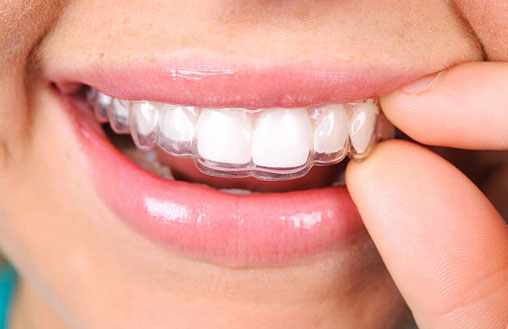
Braces vs Clear Correct
Overall, offers distinct advantages over conventional metal braces. It costs slightly more, but in the end, is well worth the price. They are more comfortable than metal braces, pose fewer risks to teeth and gums, and provide beautiful smiles much faster.
Appearance: simply put, clear aligners look better than metal brackets and wires. Adults wanting to fix their teeth prefer not looking like a teenager again. Clear Correct clear aligners are virtually invisible and patients are not as self-conscious and self-esteem is not lessened.
Removable: If someone wants to remove them for a brief period of time they can. This means that you are not limited to what activities you can do or what food you can eat.
Cleanseability: Since the aligners are removable one can brush and floss regularly. Gums are less likely to become red and inflamed. Also, a lot of people are worried about getting white spots on their teeth due to difficulty of cleaning around traditional braces.
Safety: No pain from sharp brackets and wires. Also, no injuries due to broken wires and brackets
Knowing what to expect: Patients are able to see the predicted end result and estimated time of treatment from the start. Metal braces can be a trial-and-error situation that gives no clear idea of what is to come.
ClearCorrect is one of the simplest smile enhancements you can choose. The process starts with a consultation with one of our office. At your consultation visit, we will take several digital photographs of your teeth/smile and use our Cerec scanning system to create fast, precise, 3D digital images of your teeth. We then map out a precise treatment plan, including the exact movements of your teeth and how long your treatment will be. You’ll even get to see how your teeth will move and preview your new beautiful smile! Digital scanning produces a much more accurate, seamless fit, which shortens your treatment time and allows us to better predict and manage your new, straight smile!
Together, you and our experienced team will look over your photos and 3D scan and discuss the outcome you desire for your smile. We are expert listeners and will customize your plan to achieve your desired results. If you like your predicted “after” image of your smile, then you can choose to start treatment. This is a major benefit of ClearCorrect: you get to see the “after” images before you invest in the treatment!
Almost everyone is a great candidate for ClearCorrect, it simply depends on what you want to fix and how complicated your case is. ClearCorrect is not always the best option for the most complicated cases. Sometimes more advanced orthodontic procedures are required for issues like large overbites, or in cases where the jaws need to be shifted. ClearCorrect can treat the following type of cases:
Clear aligners provide a number of benefits over traditional orthodontics:
Your Clear Correct trays will not irritate your tissue inside your mouth, a common problem with bracket-and-wire orthodontics. We can also prevent staining and decay by scheduling regular dental cleaning appointments – an essential part of your dental care.
ClearCorrect is perfect for older teenagers and adults. This patient base especially enjoys ClearCorrect because of it transparency. The teenage years come with enough discomfort to have to worry about braces. The desire for a more transparent option is obvious. Children and younger teenagers do not always make good candidates for ClearCorrect because their teeth are still growing.
ClearCorrect is easy and a major benefit is you can remove your trays for eating and brushing. Otherwise, your trays must remain in your mouth for no less than 22 hours per day. Patients are instructed to wear a retainer shortly after removing their braces. However, it’s not uncommon for patients to neglect their post-treatment obligations. Therefore, their teeth begin to shift to the position they were in before treatment. ClearCorrect is the same way. If you are not dedicated to your treatment, you won’t get the results you want.
ClearCorrect: The 6 A’s:
Aligners – For ClearCorrect to work properly, you must wear your aligners 22 hours a day and not go more than one hour at a time without wearing the aligner.
Attachments – These are small, tooth colored shapes that are attached to the teeth. They help the aligners to grab and position the tooth.
Adjustment – If the teeth are very crowded, it may be necessary reduce a small amount of tooth structure (tenths of a millimeter) between the teeth to create more room and speed up movement.
Additional Aligners – After your first full set of aligners, if your teeth are not exactly where we want them, it may be necessary to add additional aligners, called over-correction aligners. This is included in your case fee.
After – Retainers are needed after you complete your treatment. We recommend that our patients wear their retainers 22 hours a day for the first 3-6 months, and then every night thereafter.
Along The Way – Continue your recommended hygiene schedule in order to ensure the best tooth movement and protect the gum and bone during treatment.
Retainers are very important, whether you’ve used traditional metal braces or ClearCorrect. At first you will be required to wear your retainers 22 hours per day. This recommendation is based on many factors, including the severity of your initial problem, your age, and whether we are using the retainers to finalize a few tooth positions. The majority of our patients are on this schedule for 3-6 months. If the plan is followed then they can be reduced to wearing only at nighttime for 6 months. Nighttime only is highly recommended until 12 months of daily retainer wear has been accomplished.
After 12 months of continuous retainer wear, we often recommend that you continue to wear your retainers at night 3-5 times a week for life. The reason we recommend this cycle of wear is due to the slow shifting of teeth forward and inward as we get older. This movement occurs very slowly and in general takes decades to occur. However, it can be prevented through continued and consistent wear of retainers. We recommend that you replace your retainer every year to keep your smile looking the same way it looked the day you completed ClearCorrect. We can create enough retainers in advance so that you never have to worry about losing them, breaking them, or wearing them out, and it also saves money! They are a set of four clear retainers, so you can use them or keep them for future use.
Caring for Your Aligner Trays
Heat can distort your aligner trays, so make sure to wash them using only recommended cleaners and lukewarm water. Don’t leave them inside your car or in the sun, which can damage them.If you lose your aligners, let us know right away so we can provide a replacement or let you know if it is ok to move onto the next set.
Wearing a Retainer
As with all orthodoATIONntic treatment, you will need to wear a retainer to keep your teeth from shifting and to protect your new smile.
WHAT ARE COMPOSITE FILLINGS?
Composite fillings are made of a tooth-colored resin, and are far superior in appearance once placed. We are focused upon protecting the health of our patients, and in placing fillings that are bio-compatible, durable, and look natural. Having fillings that perfectly blend with your natural tooth color creates a more attractive look, as they are virtually undetectable. Rather than the dark color of metal fillings, your teeth and entire smile will appear far more brilliant and appealing. Composite fillings are the perfect restoration for the following dental problems:
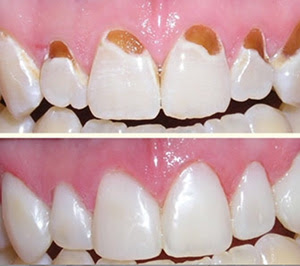
What is a Filling?
When a tooth has become damaged by decay, a filling is used to repair it and return its normal function and shape. During treatment, the dentist will first remove the decayed tooth material and clean the tooth of any debris. Next, he fills in the cleaned out cavity with one of the types of filling materials. A filling protects the tooth from further decay or damage due to its weakened state.
What Types of Fillings Are There?
Dr. Masso will discuss the filling options available to the patient and together they will choose the material to be used. The factors affecting the type of filling include the extent of the damage, whether the person has allergies to certain materials, where in the person’s mouth the filling is required, and how much the material will cost. The types of fillings include:
Composite resins are color matched to teeth and are employed where a natural appearance is desired. Composites may not be ideal for large fillings because they can chip and wear over time. They can also become stained and usually last from 3 to 10 years.
Porcelain fillings are referred to as inlays or onlays. They are made in house and then bonded to teeth. They can be color matched and resist staining. A porcelain filling will cover most of the tooth, and they cost about as much as gold.
Do fillings ever need to be replaced?
Fillings can wear over time and some materials, like the white composite resin, can become stained. Constant pressure from chewing, grinding or clenching teeth can damage fillings with chips, cracks or accelerated wear. When the seal between the filling and the tooth is breached, food particles and decay-causing bacteria can enter the tooth causing additional decay. If this happens and is not treated, the decay could reach the pulpy center of the tooth and necessitate a root canal.
Metal-Free Fillings
For a beautiful appearance and conservative approach, our metal-free fillings can’t be beat!Fillings are among the most common yet conservative methods used to restore strength and function to damaged teeth. At one time, all fillings were made from unsightly mercury (amalgam), but thankfully times have changed!
Metal-free fillings – a better alternative!
Modern fillings are made from natural-looking, composite resin. Their composition is metal-free and offers many advantages over older metal alternatives. Our results with metal-free fillings are so esthetic they blend with your natural tooth.
Why should I choose metal-free fillings?
The benefits of metal-free fillings are numerous, including:
A beautiful appearance – Available in many shades, resin fillings blend naturally with the rest of your smile.
A conservative approach – Less tooth structure needs to be removed for metal-free fillings, preserving the natural strength of your teeth.
Oral health benefits – Metal-free fillings are stable, strong, and mercury-free. They don’t expand or contract with hot and cold foods. These properties preserve the integrity of your teeth while locking out harmful bacteria.
Request your appointment with Dr. Masso today! If you are in need of a dental filling in Nashville, we invite you to beautify and protect your smile with discreet metal-free fillings from Belcourt Family Dentistry. Our commitment to meticulous, conservative dentistry makes us a natural choice. Schedule your appointment today!
Mercury-free and mercury-safe dentistry
Amalgam fillings contain about 50 percent mercury. The toxin is inhaled, absorbed, and ingested, accumulating in the body over time. Dr. Masso practices mercury-free dentistry, placing NO amalgam fillings. Instead, he utilizes the safest, most body-friendly, non-metal restoration materials available.
Dr. Masso is trained in mercury-safe dentistry. This is a strict protocol for safe removal of amalgam, that includes:
Biocompatibility testing
Did you know that many materials are available for dental restorations? Even in one category, such as filling material or porcelain, there are numerous different compounds. Conventional dentistry is designed with “most people” in mind. Yet a material that is safe for one individual could be harmful to another. Dr. Masso recommends biocompatibility testing for all patients.
Dr. Masso always strive to restore your natural tooth and prevent the need for an extraction. However, in some cases, a tooth may need to be removed if it has come loose, gotten infected, or become so damaged it cannot support a crown or other restoration. If a tooth does need to be extracted, Dr. Masso will help you find the most beneficial tooth replacement option for your needs and lifestyle. From bridges and dentures to dental implants and implant dentures, our goal is to help you obtain the most natural tooth appearance and function.
Removing a tooth is always a last resort and we try to avoid it, when possible. Unfortunately, sometimes removing a tooth is the best way to protect your health. When a dental extraction becomes necessary, we will always make sure you are numb and relaxed for treatment.
Dr. Masso is skilled at removing damaged teeth. Your procedure will be over before you know it! Once your procedure is complete, we will go over the best way to help your body heal. Depending on the location of your extracted tooth, we may recommend tooth-replacement therapy such as a dental implant to keep your remaining teeth from shifting and to avoid bone loss.
Cracked teeth
Cracked teeth demonstrate many types of symptoms, including pain when chewing, temperature sensitivities, or even the release of biting pressure. It is also common for pain to come and go, making it difficult to diagnose the cause of discomfort.
Chewing can cause movement of the cracked pieces of your tooth, and the pulp within the tooth becomes irritated. At the same time, when biting pressure is released, the crack can close quickly, resulting in sharp pain. Eventually, the pulp will become damaged and tooth will consistently hurt, even when you are not chewing. It is possible that cracks can lead to infection of the pulp tissue, which can spread to the bone and gum surrounding the problematic tooth.
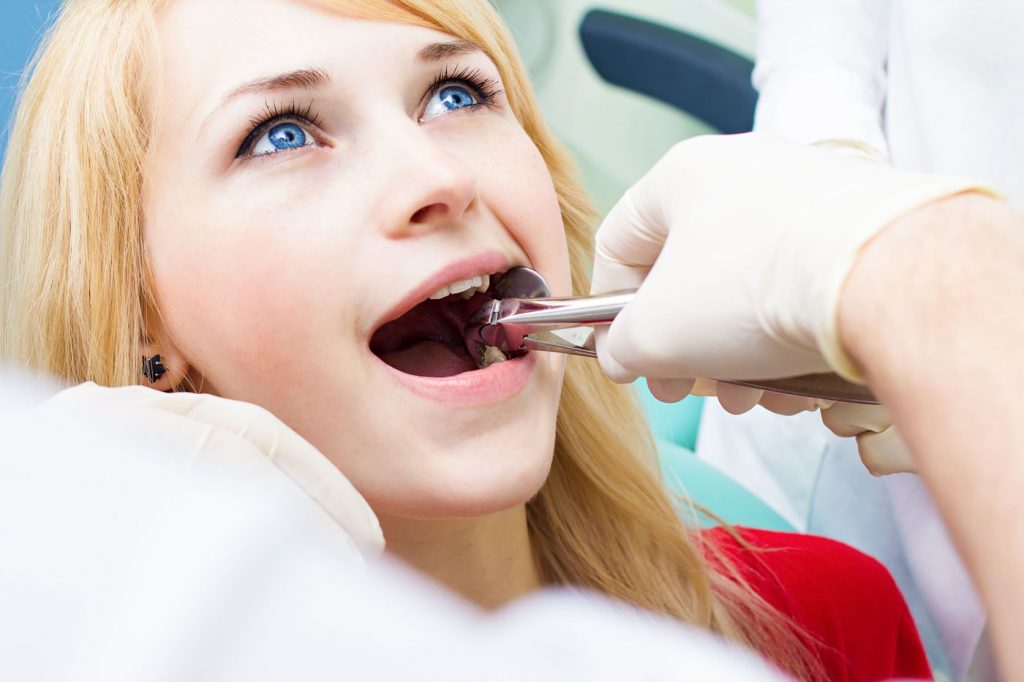
TYPES OF CRACKS
CRAZE LINES
These are tiny cracks that only affect the outer enamel of the tooth. These cracks are more common in adults. These types of cracks are superficial and are usually of no concern.
FRACTURED CUSP
When a cusp becomes weakened, a fracture may result. The cusp may break off or be removed by a dentist. A fractured cusp rarely damages the pulp, so root canal is not necessary. Your dentist will usually restore the tooth with a full crown.
CRACKED TOOTH
This type of crack extends from the chewing surface of the tooth and vertically migrates towards the root. In some cases, the crack may extend below the gum line. It is possible for the crack to extend further into the root. Damage to the pulp is commonplace. In this case, root canal treatment is usually necessary. A cracked tooth that is not treated will worsen, resulting in the loss of the tooth. Therefore, early detection is essential.
SPLIT TOOTH
A split tooth is usually the result of an untreated cracked tooth. It can be identified by a crack with distinct segments. This type of tooth can never be saved intact. Yet, the position and extent of the problem will dictate whether any portion of the tooth can be saved. Sometimes, endodontic treatment by the doctors and restoration by your dentist can be used to save a portion of the tooth.
VERTICAL ROOT FRACTURE
A vertical root fracture begins at the root and extends towards the chewing surface of the tooth. Unfortunately, they show minimal symptoms and may go unnoticed. Treatment involves endodontic surgery if a portion of the tooth can be saved by removal of the fractured root. Otherwise, the tooth will have to be extracted.
WISDOM TEETH EXTRACTIONS
Wisdom teeth are the third set of molars in the back of the mouth and usually the last 4 of the 32 teeth to erupt. Some people are born without wisdom teeth. Others have enough room in their mouths to accommodate them. For most people, however, the wisdom teeth cannot come in all the way and need to be removed as young adults.
John G. Masso, D.D.S. is a general dentist in Nashville, TN performing wisdom teeth extractions. This is a common procedure, performed under local anesthesia, oral sedation. Dr. Masso will release you the same day of the surgery with post-op instructions and medications to relieve pain and swelling, if needed.
PROBLEMS WITH WISDOM TEETH
When a wisdom tooth cannot erupt completely, part of the tooth may be covered with a flap of gum. Food and bacteria can become trapped under the flap, which can cause pain, swelling and a low-grade infection known as pericoronitis, typically in the lower wisdom teeth.
Wisdom teeth may be impacted – blocked from coming in by bone or other teeth, or tilted under the gum. Impacted wisdom teeth sometimes cause pain, but not always. Some people only become aware of them when they show up on dental x-rays.
Even when wisdom teeth are not causing any pain, swelling, or infection at present, they still may cause problems in the future. Potential problems include decay, infection, crowding, damage to other teeth, and gum problems in adjoining teeth. More serious complications include cysts (fluid filled growths) that can cause permanent damage to teeth, bone, and nerves.
REASONS TO HAVE WISDOM
TEETH EXTRACTED
Not everyone needs to have their wisdom teeth removed. If there is a chance they will cause problems in the future, it better to have them extracted when you are young, at a time when you heal faster, the roots of the teeth are not fully developed, and the bone around the teeth is not as dense.
Many people have their wisdom teeth removed between the ages of 17 and 25 for any of the following reasons:
John G. Masso, D.D.S. serves the Nashville area, providing holistic, conservative, general and cosmetic dentistry services. His approach is to use the least aggressive methods possible, while ensuring the well-being of the entire patient.
For many people, wisdom teeth can cause a range of oral health issues, from swelling and infection, to crowding of the surrounding teeth, to serious complications. If your wisdom teeth are causing problems, or you’re not sure if you need to have them extracted, schedule a consultation with Dr. Masso.
Missing teeth can make an enormous difference in your daily life, affecting your ability to eat and smile with confidence. For men and women with excessive tooth decay or advanced gum disease who have lost most if not all their teeth, complete dentures is an ideal solution. Restorative dentistry expert Dr. Masso provides comprehensive restorative services, including complete removable dentures, at his innovative practice in Nashville, Tennessee. If you’re missing several teeth and you want to learn more about complete removable dentures, call the office or book your appointment online today.
Dentures Q & A
What are dentures?
Dentures are a removable dental appliance designed to replace missing teeth. They’re often the best restoration option for patients who’ve lost all or most of their teeth, either from advanced gum disease, severe tooth decay, or through traumatic injury.
Fixed dentures, which only a dentist can remove, aren’t as common as removable dentures, which you can take out yourself for daily at-home cleanings.
Are there different types of complete dentures?
Yes. The two main types of complete, removable dentures include:
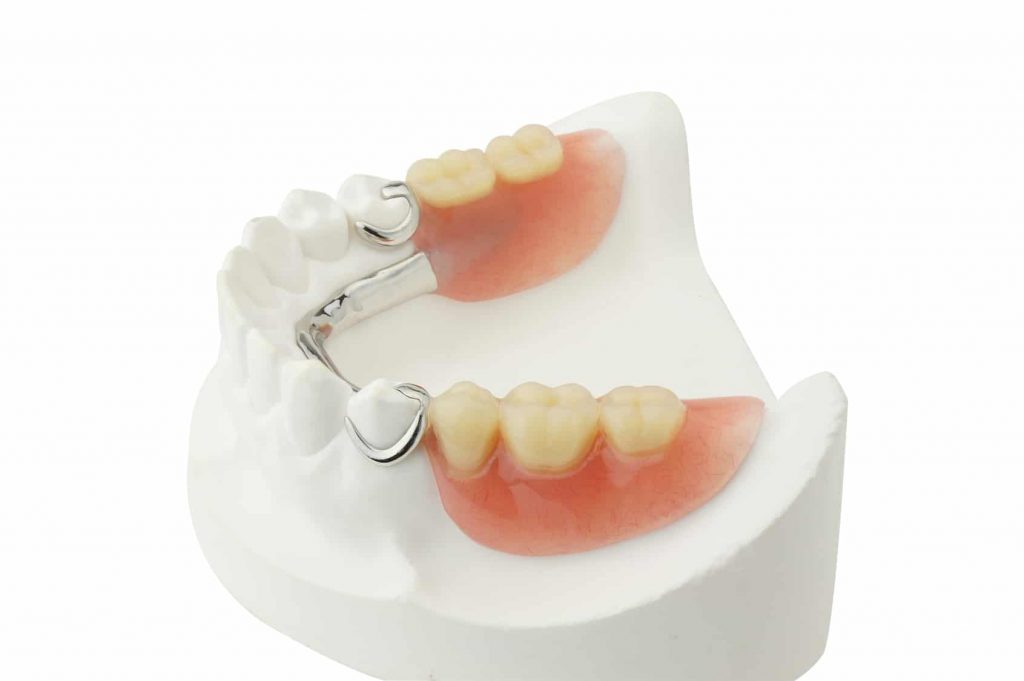
Conventional dentures
Conventional dentures are used to replace a complete set of top teeth, bottom teeth, or both. This complete denture appliance can only be worn following the removal of any remaining teeth, once gum tissues have healed.
Overdentures
This complete, removable appliance fits over dental implants that are surgically placed in your jawbone. They can also be made to fit over a few remaining teeth, as well. Overdentures are more stable than conventional dentures because they can’t slip out of place.
Implant-Retained Dentures
If you have difficulty with dentures fitting properly and would like more security when you eat, laugh, and speak, let us know. We offer All-on-4® implant-retained dentures. Dr. Masso will place four dental implants that allow your dentures to lock into place. This solution opens the door to a wider variety of foods and gives added confidence because your dentures will stay put when you need them most.
All-on-4 Dental Implants Q & A
A less costly alternative to traditional dental implants, All-on-4 is typically an all-inclusive treatment.
Every dentist will offer a different payment structure, but the cost of All-on-4 generally includes teeth removal, bone grafting if needed, four dental implants, and a temporary and permanent bridge to support your new implants.
We’ll match any price for dental implants, although restrictions do apply. We’ll match the total treatment plan price if you bring in a treatment plan from any competitor. The plan for treatment must come from a licensed Dentist within the past six months for comparable dental services and may be verified.
All-on-4 dental implants are ideal for those hoping to restore missing or decaying teeth, but there are a few factors to consider before opting for this treatment.
First, All-on-4 dental implants can cause minor speech issues such as slurring for a short period of time after the surgery.
If you experience slurred speech for longer than a few weeks after the surgery, contact your dentist right away.
Some patients also have difficulty adapting to the bridge bulk after their All-on-4 surgery, but this discomfort should subside once you get used to your new implants. Please call us today to book your appointment.
When you trust Belcourt Family Dentistry with your oral health, we will start from the very foundation of dentistry to ensure you stay healthy – your gums. Healthy gums are an essential element of a healthy smile and body. Healthy gums are pain-free, light pink, and hug your teeth tightly. Unhealthy gums may appear red and swollen, and they may bleed or feel painful or sensitive. Bleeding gums often indicate a problem called periodontal (gum) disease – a chronic infection in your gums that damages both the pink tissue and the bone underneath.
The Whole Body Connection
Gum disease is an inflammatory condition that affects your breath, your smile, and other body systems, including circulatory and respiratory. Research links gum disease to a number of systemic conditions, including:
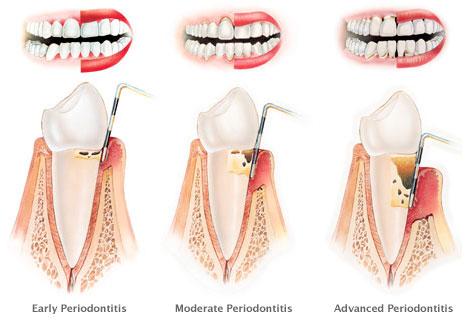
Diagnosing Gum Disease
Dr. Masso is diligent at monitoring your gum health at every dental appointment because it can change over time. Changes in hormones, as with pregnancy, medications, and even problems like dry mouth, can all affect your gums. Even stress can impact your oral health! He will take measurements of the space between your teeth and gums. Healthy gums are tightly wrapped close to your tooth. Infection causes gums to pull away from your teeth.
We also monitor other signs such as inflammation, recession, and bleeding points. If you do suffer from gum disease, we can provide customized periodontal treatment to help you get back on track.
Treating Periodontal Disease
In some cases, when we catch symptoms early, we can reverse gum disease with specialized dental cleanings designed to remove bacteria and tartar from your teeth. The bacteria and tartar irritate your gum tissue and cause inflammation. Of course, stepping up your home care is essential to the success of any periodontal treatment. Brushing, flossing, and eating a healthy diet all play big roles.
As gum disease becomes more advanced, we may need to perform an extensive cleaning. Don’t worry, though, our hygienists are thorough, yet gentle. Advanced gum disease may take a few appointments to treat. Once we have your infection under control, we will plan regular periodontal maintenance appointments often enough to keep it that way.
Staying on top of your gum health will be necessary because once you have periodontal disease; you will be more likely to experience infections in the future.
Do Your Gums Hurt or Bleed?
For gum treatments in then Nashville area, contact us right away! The sooner we treat your gums, the better off your oral health and overall health can be. Even if you have missed some dental appointments and need help getting caught up, we are here for you without a guilt trip! Dr. Masso is compassionate and committed to helping you feel good about your smile again.
Laser Bacterial Reduction
Laser Bacterial Reduction can be done on your cleaning appointment. It helps to combat bad bacteria, infections, and periodontal disease. It’s inexpensive, non-invasive, painless, lasts for months and only takes less than 5 min.
Gum Recession
Receding gums are an indication of serious gum disease. As the gums recede, the tooth roots are revealed. The roots of the teeth are very susceptible to decay, and if the gums are receding, it is critical that the condition is treated rapidly. As the gums recede gradually, a patient may only notice it when the teeth become sensitive or begin to look longer than before. A notch can be felt at the gum line. Receding gums are a symptom of periodontal disease that can be treated and resolved.
STEP ONE: EVALUATING YOUR CONDITION
To determine the most effective treatment for receding gums, a full examination of your gums and teeth will be performed, including X-Rays and hands-on evaluation. As the gums recede, the condition worsens, as pockets are formed that can allow bacteria to flourish. Dr. Masso will evaluate your condition and create a treatment plan to help restore your gums and teeth to a healthier state.
STEP TWO: YOUR TREATMENT PLAN
The treatment you need for receding gums can vary, based upon the how far the gum disease has progressed. Every person has a unique condition, and the treatment plan will be developed to address all of the factors for the individual. Having healthy gums is very important, as gum disease is linked to more serious health conditions, including stroke, heart disease, and others. Dr. Masso will explain every detail of your treatment plan to you so you understand what will occur. He is gentle, and focus on providing pain-free dental care.
STEP THREE: TREATING GUM RECESSION
Our treatments can halt the progression of receding gums. The treatments needed could include:
Root planning or Root scaling: root planing, also called root scaling or deep cleaning, may be necessary to halt the progression of gum recession. The plaque, tartar, and debris that has collected below the surface of the gums is removed with a special procedure.
Pocket irrigation: Also called oral irrigation, this can prevent the advancement of gum recession by using water to blast out the plaque, particles of food, and the debris that collects between the teeth. Pocket irrigation helps to keep the gum tissue healthy and strong, while reducing issues such as bad breath.
Pocket reduction surgery: If your gums have receded to the point in which pockets have formed around the teeth, it poses a health risk to mouth, gums, and teeth, as well as your general health. Pocket reduction surgery cleans out the collection of bacteria, after folding back the gum tissue, so it can reattach to the teeth and be restored to a healthier (and more attractive) position.
Soft tissue grafting: Some patients may require soft tissue grafting to restore lost gum tissue. Tissue can be harvested from the inside of your mouth and then placed and stitched over the area of your gums that receded.
Regenerative procedures: The regeneration of gum tissue is typically performed through gum grafting. This procedure can resolve the unpleasant appearance of the gums, particularly if discolored or appearing “toothy.”
GUM GRAFTING
Gum Grafting
Dr. Masso has brought new treatments in gum restoration, including gum grafting. If your gums have receded to the point in which the roots have been exposed, gum grafting may be part of your treatment plan.
HOW DOES GUM GRAFTING WORK?
The process of gum grafting has several steps. The first step involves a thorough deep cleaning of the teeth and gums, with tartar and bacteria removed from below the gum level. Your treatment involves a local anesthetic so that it is not painful. Small incisions are made in the site that creates a tiny pocket into which the graft will be inserted. Tissue may have been harvested from inside your mouth, or medically processed human tissue will be used for the graft. The tissue is then attached to the existing gums with sutures (stitches). It takes about six weeks for the entire healing process. During the first week, special surgical materials will protect the area.
WHY GUM GRAFTING?
Some patients will have gum grafting in a treatment plan. The common reasons to have this procedure include:
Reducing tooth sensitivity
Improved appearance
Improved gum health
GUM GRAFTING TO RESOLVE RECEDING GUM TISSUE
As gum disease progresses, one unsightly symptom is receding gums. As the gums shrink back from the teeth, more and more of the tooth root is exposed, making the teeth look longer, and leading to sensitivity and pain. To restore your gums for oral health, to protect the roots of the teeth, and to create a more appealing appearance to your smile, gum grafting could be the right treatment. Only a full evaluation of your current condition will reveal what treatment plan will be best. We urge you to call our office to set an appointment if you have notice that your gums have begun to recede; the earlier the condition is treated, the better it is for you and your overall health.
If you are suffering from any type of periodontal disease, you can trust Dr. Masso to have every possible method available to help you, including the ability to perform gum grafting. He treats every patient with kindness, respect, and a gentle touch, and is committed to holistic dental techniques. The health of your gums and teeth impact your whole body; we can help to you maintain the health of your gums, or to resolve gum recession problems with the most advanced, effective, gum grafting techniques.
BONE GRAFTING
Gum disease can eventually lead to loss of bone in the jaw. Bone grafting is a technique that restores jaw bone volume and encourages natural bone growth. In some cases, a bone graft is needed so that a stable foundation for an implant can be established. Unfortunately, when a tooth is lost, without the ongoing pressure of the teeth, the underlying bone begins to shrink in size, leaving the area too small to place an implant and restore the tooth. The first step is often a bone graft. To stay ahead of periodontal disease, be sure to contact us, for a thorough examination.
HOW DOES A BONE GRAFT WORK?
This procedure may involve more than one step. If bone material is going to be harvested from your own body, this step takes place first. Synthetic bone material is also available to perform this procedure, or bone material harvested from a bovine (cow) source. Each of these options will be discussed with you prior to the procedure, and why a particular material will be best in your case. Our office focuses on overall patient health, and we use only the safest, biocompatible materials for every procedure.
The gum tissue is pulled back, and the area fully cleaned so that the bone material can be placed. The material is then placed in the site being treated. In some cases, a thin membrane is placed below the gum line to protect the new bone material as it heals. A protein product called Emdogian is placed on the site prior to stitching it closed. This stimulates the tissues to grow and create stronger support.
WHY BONE GRAFTING?
Several conditions can be improved with a bone grafting procedure. These include:
Dental Implants: You need adequate bone structure to secure an implant. A bone graft may be required to ensure the implant can be placed.
Ridge augmentation: Ridges in the bone can be present after an injury, a birth defect, or as a result of a severe case of periodontal disease. This procedure makes the bone in the jaw uniform in shape.
Repositioning nerves: In some cases, the nerve in the jaw must be moved for an implant to be placed. A bone grafting procedure can involve repositioning these critical nerves so that no sensation is lost in the lower chin and lip.
RECOVERY FROM BONE GRAFTING
The recovery time from this procedure will vary from patient to patient. You will be given a prescription for pain medication to manage discomfort. Antibiotics are typically part of the treatment, and the entire prescription must be taken. To manage any swelling, an ice pack is effective. Don’t skip meals, but limit them to soft foods such as soups or pureed foods initially. Don’t brush the teeth close to the area in which the surgery was performed until advised to do so by Dr. Masso. Ordinarily, by the third day after bone grafting, you begin to feel and look normal, and the swelling will have reduced greatly. As the days pass, the treated area becomes healthy again and you can return to your usual activities.
CROWN LENGTHENING
For some patients, a crown lengthening procedure will be part of a custom-tailored treatment plan developed to resolve a dental problem.This procedure is performed to improve gum tissue health, or to prepare the area for a restoration or for a cosmetic enhancement. Crown lengthening is also commonly used to treat patients who wish to correct the appearance of a “gummy” smile, caused by excess tissue covering too much of the tooth.
Crown lengthening works to reveal more of the natural tooth through a process that reshapes or recontours both gum and bone, and may be an appropriate treatment for a single tooth or several teeth, or the complete gum line, depending upon the unique issues of the patient. After the procedure is complete, the patient will have a more aesthetically pleasing smile, without excess gum tissue.
HOW DOES A CROWN LENGTHENING PROCEDURE WORK?
Every person has a unique situation they are trying to resolve. In some cases, more of the tooth structure needs to be exposed so a restoration (such as a crown or an implant) can be placed. Generally, the procedure involves the following steps:
A great smile requires a commitment from you. Having a good preventive dentistry routine and maintaining necessary general dentistry care are the best ways to keep your smile looking and feeling great.
At Belcourt Family Dentistry, we help our patients develop an effective preventive care routine so that they can avoid many of the dental problems that arise from even unintentional neglect.
Preventive oral care includes much more than routine cleanings. Dr. Masso builds long term relationships with his patients ensuring that he is able to monitor any changes in their oral health. Nashville, TN residents who would like a dentist who takes a long-term view of their dental health, should book an appointment.
Preventive Dentistry for All Ages
When you have regular dental exams, professional dental cleanings, and routine x-rays, you make it easier to identify any dental problems you may have early on – when we can treat them with simple and more conservative treatments.
Every family is different! If you or your family has a history of decay, we offer fluoride treatments and dental sealants as extra protection against cavities. Fluoride treatments help keep the protective enamel that covers your teeth strong. Dental sealants are a barrier between bacteria, food, and your teeth.
An often-overlooked form of preventive dentistry is an athletic mouthguard. If you or your kids participate in sports, an athletic mouthguard can protect your smile from the hits you might take while you are having fun.
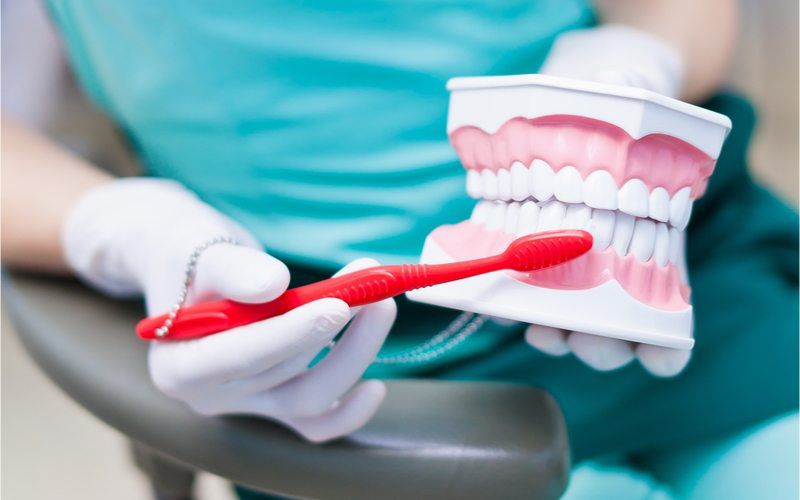
Preventive Care
What procedures are included in preventive care?
Full-service preventive care encompasses not only routine cleanings and checkups but requires a long-term relationship, which allows Dr. Masso to maintain a vigilant watch over his patient’s oral health. He keeps a record of each patient’s teeth so that on each visit, he can check to see if anything has changed. The most common procedures include regular cleanings, exams, and digital x-rays. Cleanings remove plaque and tartar from teeth, so decay does not have a chance to set in. Dr. Masso also uses special tools to check for soft spots or tartar deposits between teeth and on tooth surfaces. Dr. Masso provides periodontal charting on an annual basis to monitor gum tissue health. If a patient shows signs of bleeding gums or increased numbers, a deep cleaning can be ordered to protect periodontal health. Digital x-rays reveal the inside of the teeth and below the gum line to check for cavities and other problems that are not detected during the regular exam.
Teeth Cleaning
Despite improvements in oral health and dental care, about 178 million people in the United States are missing at least one tooth. Cavities and gum disease are common causes of tooth loss. At Belcourt Family Dentistry Dr. Masso offers gentle, professional teeth cleaning to help prevent cavities and gum disease. To schedule your teeth cleaning appointment, call the office or book online today.
Teeth Cleaning Q & A
People should visit the dentist for general and preventive dentistry exams every six months or twice a year unless other risk factors indicate that more frequent check-ups are necessary. This will include a checkup and cleaning to make sure the teeth and gums are in optimal health. The dentist will also check for signs of decay and damage such as periodontal disease and oral cancer. If a patient has needed a deep cleaning, he or she will need to have a maintenance check up every three to four months.
Professional teeth’s cleaning is a preventive oral health service that supports your daily at-home oral hygiene routine. Regular tooth brushing and flossing removes food debris and bacteria and keeps your teeth and gums healthy.
However, even with good at-home care, you can’t get rid of all the bacteria in your mouth. The leftover bacteria create a biofilm called plaque that collects on your teeth and tongue and under your gums and contributes to the development of cavities and gum disease.
Brushing and flossing remove plaque from the surface of your teeth and gums but may not be able to get rid of the plaque that settles under the gumline. When it’s not removed, this plaque hardens into a substance called tartar.
Tartar traps bacteria on your teeth and under your gums and may lead to tooth decay, gum disease, or tooth loss if left untreated. Unlike plaque, brushing and flossing can’t remove the hardened tartar that collects on your teeth and gums.
A professional tooth cleaning is the only way to remove the hard, calcified tartar.
You can expect comprehensive and gentle care during your teeth cleaning. First, your dental professional reviews your medical history, examines your teeth and gums, and assesses your bite.
Once your initial exam is complete, your dental professional starts your teeth cleaning, which includes:
Depending on your oral health needs, your provider may also take X-rays to look for oral health issues that a visual oral exam can’t see.
What is Root Canal Therapy?
Root canal therapy refers to the dental procedure involving the removal of bacterial from the pulp of the tooth. The pulp is the softer inside of the tooth, and if it there is a deep infection, a root canal becomes necessary. This is typically one of the more critical stages of tooth decay and must be treated sooner rather than later.
An untreated infection in the pulp of a tooth can lead to further decay or further complications. The pain typically increases, and the tooth may become discolored. After the tooth is treated it increases the chance the tooth can be preserved. In some cases, the patient may need a crown on the tooth as well.
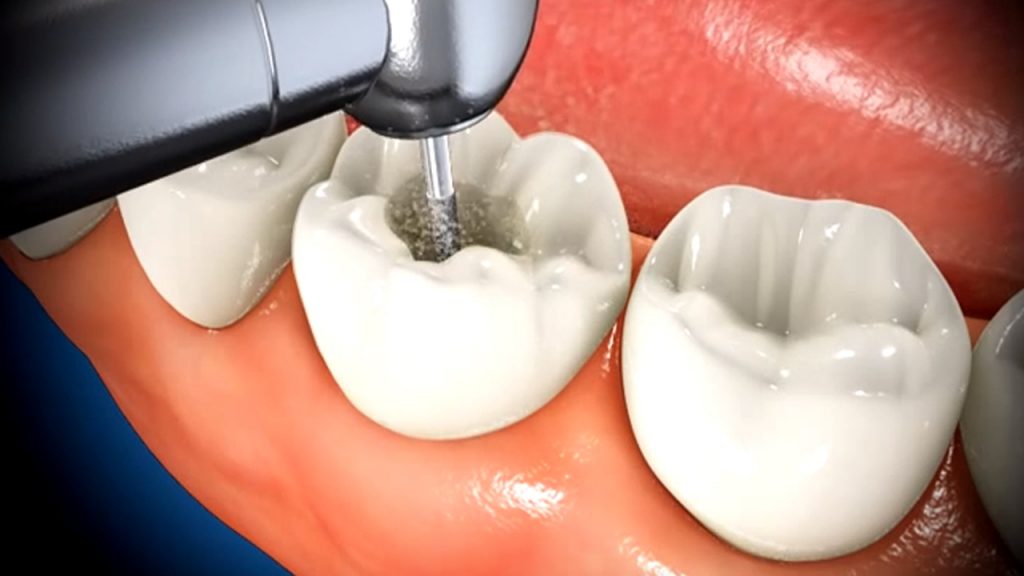
We feature tooth whitening procedures. It is safe, effective and fast so schedule your in-office appointment today for a brighter smile!
Teeth Whitening
Arguably the most requested cosmetic dental service, in-office teeth whitening can significantly brighten your smile. Chairside bleaching is a standard approach that uses powerful bleaching agents applied directly to your teeth. As these chemicals break down, oxygen penetrates the enamel to help lift stains and visibly lighten the color of your teeth.
Why Do Teeth Yellow?
While tooth enamel is one of the body’s hardest substances, it is also porous and can stain. A person’s habits can cause the teeth to discolor over time. For example, eating and drinking items such as tea, coffee, and berries or smoking cause the teeth to become stained and yellow in appearance. Other factors including age, trauma and certain medications can also cause discoloration at a deeper level on a tooth. Professional treatments utilized by the dentist to whiten, or bleach, teeth can usually get rid of any discoloration. In some instances, however, the staining is inside the tooth, topical whitening solutions are not effective. In these cases, deep internal bleaching or the use of a veneer or crown will typically be used.
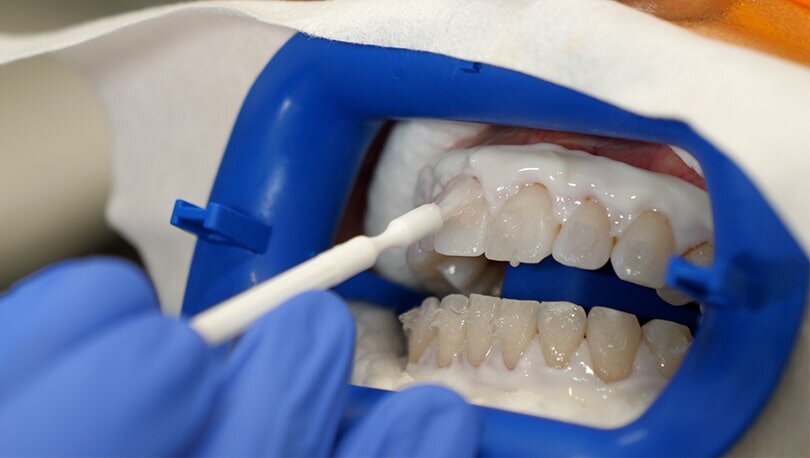
What options are available to bleach teeth?
Some patients will use at home teeth brightening options like whitening toothpaste, over the counter bleaching trays, over the counter whitening strips and paint-on whiteners. These over the counter products can be effective on minor staining if used correctly. There are some risks as the placement of the bleaching gel is not precise. Dr. Masso offers supervised trays that are customized to fit the patient’s mouth for a quick and safe teeth-bleaching experience.
Is Bleaching Safe?
Dr. Masso uses clinically tested, trusted teeth whitening procedures to ensure that each person will receive the best possible results without any unwanted side effects. Some patients report tooth sensitivity after the procedure. However, the sensitivity usually fades quickly, and any discomfort experienced should be minimal.